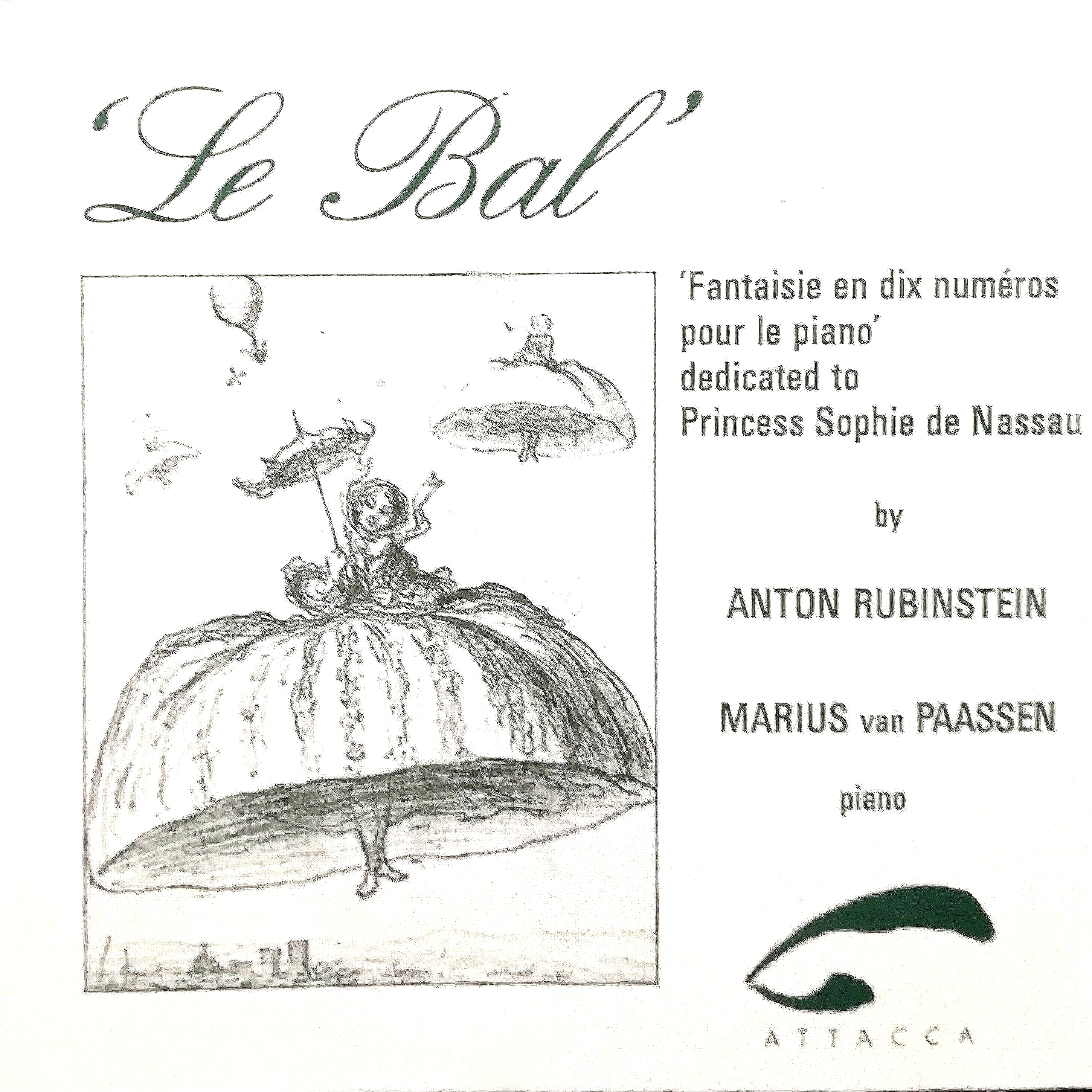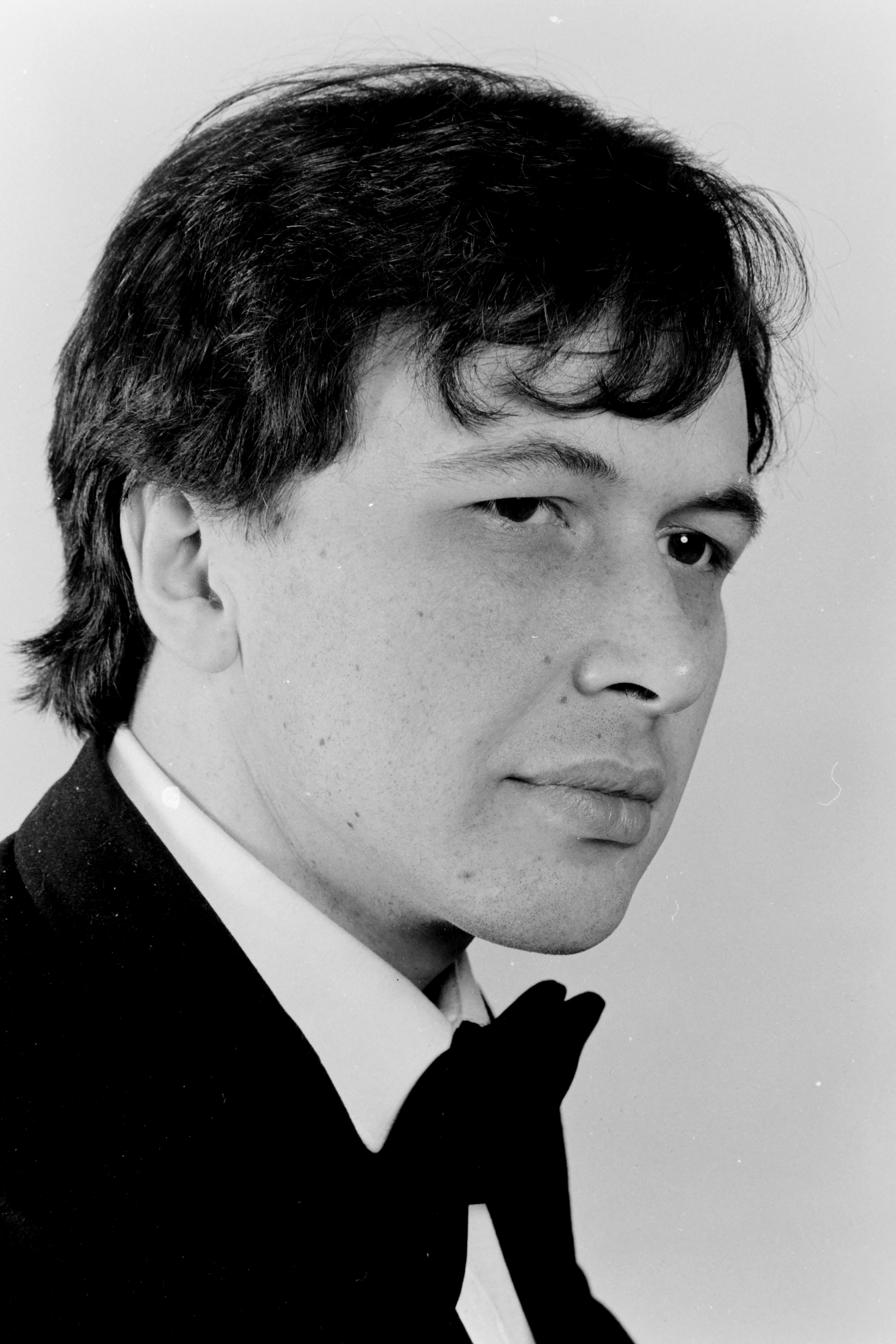
Anton Rubinstein
CD: Le Bal
Marius van Paassen piano
FIRST COMPLETE RECORDING OF LE BAL OPUS 14
Rubinsteins most famous pupil Josef Hofmann , him self a legend recorded some of the movements in 1895 on Julius Block cylinders.
It is noteworthy that he took the same tempos as Van Paassen, who was not familiar with Hofmann's recording at the time of its recording in 1991.
recorded 1991 in Utrecht muziekcentrum Vredenburg The Netherlands
ATTACCA BABEL 9268-7 DDD
The festive dance evening was an important social event in the 19th century. It was an occasion where marriages were arranged or broken, and an informal meeting place for business or political contacts. While in the 18th century only aristocrats and rich merchants could afford the pomp and splendour of an evening with an orchestra, in the 19th century dance parties were for everybody. Vienna led the way. The Waltz, the Galop, the Polka and many other dances advanced throughout the whole of Europe from the Austrian capital, where crowds of people danced all night to the rhythm of this music. In Russia the railways took advantage of this popular entertainment in a remarkable way. The first Russian railway line was constructed between St. Petersburg and Pavlovsk, the site of one of the summer residences of the Czar. Naturally the connection didn't prosper, but this changed when a smart impresario in 1856 had the thought to invite Johann Strauss JR. for a series of concerts in the little country village. Thanks to Strauss immense popularity many people boarded the train in order to attend one of his concerts. The railway company was saved and the waltz took firm root in yet another country.
After appearing in many European capitals as a child prodigy, the Russian pianist and composer Anton Rubinstein (1829-1894) settled in Vienna for a year (1846-1847), where he got acquainted with the city's dance music. At the time he was not yet recognised as one of the greatest pianist of the century, but a little later his contemporaries considered him the equal of Liszt and Johann Strauss and Rubinstein would play each other’s works. In 1846 however, Rubinstein lived in poverty. Still, he was composing a lot of music, but upon returning to Russia the custom officers mistook his music-scores for a revolutionary manifest written down in a mysterious code. Rubinstein's compositions ware confiscated and only through the help of influential friends he escaped expulsion to Siberia. The trunk with his works was sadly never recovered.
Between 1848 end 1854 Rubinstein held the position of court pianist in St. Petersburg. Le Bal, his opus 14, dates from this period.
Anton Rubinstein left a large oeuvre consisting of operas, symphonies, piano works, songs end chamber music. His music was performed by famous artists like Liszt, Mahler, Saint-Saëns, Brahms, Von Bülow, Hofmann and the singer Fiodor Chaliapin. During his lifetime Rubinstein was extremely popular both in Europe and in the United States, but after his death he soon sank into oblivion. Three reasons for this can be mentioned.
Firstly Rubinstein was far from being an avant-garde composer, and a conservative style is often less admired by the experts than innovation.
Secondly, already during his lifetime he was rebuked for not composing in true Russian style, while in the second half of the 19th century nationalistic movements in the arts became strong. Rubinstein however, considered music an international language and disputed the nationalistic orientation manifest in the works of many Russian composers, prominent also in the operas of Richard Wagner.
Thirdly his works are difficult to perform. His own style of playing the piano - full of risks, titanic but very melodious - was completely different from what is customary today. Some of the recordings of Horovitz, who stated Rubinstein was his 'pianist grandfather', may give insight in the style of Rubinstein's playing.
Le BAL (854) contains dance music, but the work is also an expression of the feelings induced by a 19th century dance party. The first piece - Impatience- splendidly portrays the excitement before the start of the party. One already hears fragments of the dances that will be played later. Especially the longing for the Waltz was ingeniously captured by Rubinstein. This most sensuous of all 19th century dances appears after a pompous Polonaise end six Contra dances with their characteristically contrasting dance rhythms. At times a melancholy comment (in minor keys) on the Waltz is sounded which is answered by an exuberant expression of the enjoyment in the rhythm of the three-four time. Of course this Waltz concludes in ecstasy. In the following intermezzo - granting the dancers a rest, but very taxing for the pianist! - one can imagine the excited conversation (agitato) of the guests after the dance. They are left but a small pause, because already the Polka starts, one of the most popular dances of the 19th century. The Galop is the highlight of the evening. Because of the fatiguing character of this dance, it never lasted longer than two minutes: the dancers could simply not 'galop' much longer. For this reason Rubinstein broke his Galop with a slower section in order to give the dancers a chance to recover their breath. In 'Le Réve' (The Dream), the last piece of the cycle, the dancers once again are carried off in a Galop, but then the music ends in sweet slumber.
xxxxxxxRubinsteins pupil Josef Hofmann recorded some of the movements in 1895 on Julius Block cylinders.
In 1996 Van Paassen had the honour to inaugurate the old, renovated House of Parliament with this composition by Anton Rubinstein. His performance was attended by Prime minister Wim Kok and many other prominent politicians.
